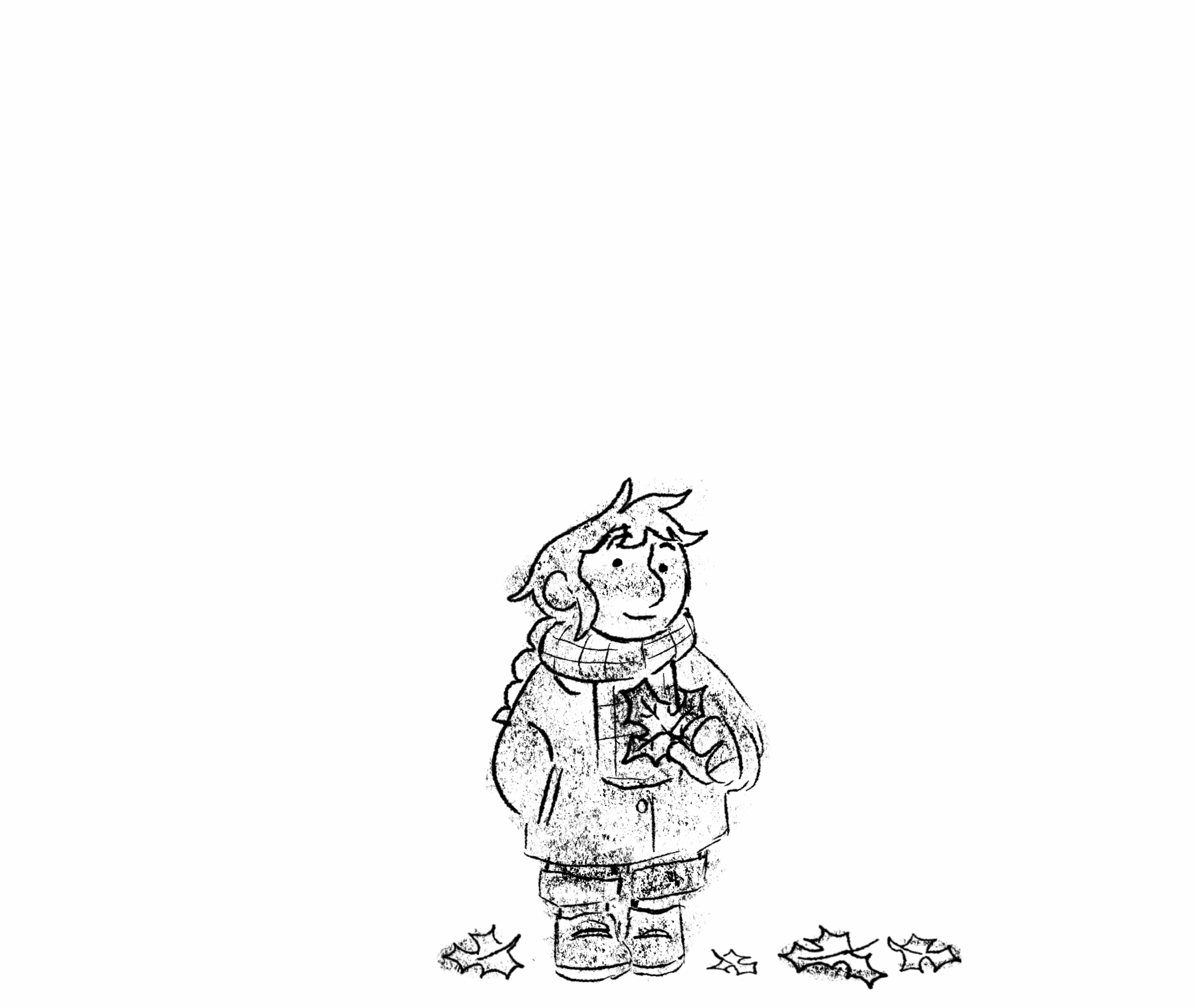How to draw a tree (with the help of Mr. Munari)
Trees are tough.
Picture this, you want to draw a character walking around a city, or a garden, maybe a little hike in the forest. The character looks great, let’s focus on drawing the environment now, okay let’s draw a tree. Hmmm…
Nope….hmm not quite…..almost….
Why is it so hard?? I see trees every day!
How can I learn to draw better trees, if only there was a clear manual.
Well, I wish there was more manuals in life as clear as this one. Well actually after reading the book, the most important aspect of learning how to draw trees is the graph on the cover.
Pretty convenient, you don’t even have to open it.
More seriously this is probably my favourite book that I bought in 2024. I found it in a bookshop in Madrid while I was travelling through Spain. I just flipped through the book and fell in love with the drawings and the text, convinced that my 4 years of Spanish class from 10 years ago will let me read it. Thank goodness the book is like 80% drawings.
Just a little backstory: Bruno Munari was a great Italian artist, designer and as he said so himself “ I was known for being an inventor of useless machines”.
Munari is widely considered as” one of the greatest actors of 20th-century art, design and graphics“. He wrote this book in 1978.
Okay let’s start again from the beginning. From the second page, Munari refers to very old friend from the country, a certain Leonardo da Vinci, along side a very familiar graph:
The basic formula is to quote Murani: “The branch that follows is always slenderer than the one before it […] This growth pattern is so simple that anyone can draw it. “ Munari explains also that the perfect tree doesn’t exist and one should also take in consideration the impact of weather patterns, wind, rain, lightning, etc..
I just want to point out how absolutely beautiful Munari’s drawings are. He manages to capture exactly the essence of a tree, while giving you all the confidence that you can do it too. He is not just a masterful artist and designer, he is a great teacher, very didactic in his instructions and drawings. I mean look at this growing tree, so mathematical yet so pretty.
I started sketching with charcoal, comforted by the book next to me. Focusing for now only on the branches, and putting aside the leaves.
Following the instructions of the book, I went from very straight branches, to more curvy ones.
Trying to capture through each drawing the essence of a tree.
Like the good teacher that he is, Mr. Munari offers you also an alternative method, which is you can build your tree like a succession of the letter Y.
Another exercice in the book is more of a crafty demonstration. You need paper, preferably coloured or dark, a pair of scissors and tape or glue. Take the piece of paper, cut it to the width of the trunk and then divide each segment again and again with smaller and smaller cuts. You can now fan out the segments to reveal your tree.
Above is a picture of when Munari did this exercise with a whole community, resulting with this beautiful paper tree on the ground. And my own little tree, taped to my sketchbook.
I wanted to go sketch some trees outside, carrying with me all my learning from Mr Munari.
So today is sunny in Paris, and also it’s cold, 3 degrees Celcius, but the sun is warm on our face and hands. I dragged my wonderful partner on my quest as a drawing date.
My convincing argument? Winter is the best season to study the trees as they are -naked-
I used ink this time, and the exercice turned out of course harder than expected. While studying the trees around me, unlike creating them from imagination, I found the trees so utterly complex, twisting branches in every direction, impossible to follow perfectly. The trees in Paris are also very impacted by mankind, from architectural aesthetics movements ( for some reason people love square trees here) or just practical reasons ( they need to cut the branches so that traffic can pass below).
Here was my last drawing, after that my hands got too cold.
And I do like the complexity of the drawing itself, this monster of a tree showing all the marks of time, and all the cuts to make it into a square shape. But I miss the simplicity of my previous drawings with charcoal, when I was following the pattern from the book but creating from imagination.
I want to draw stylised trees or at least trees simple enough so that I can design them myself, with very little reference. I want to draw trees with a personality, a tree that’s like a friend… wait a second…
From the depth of my childhood memories came back this book, The Giving Tree by the American writer and Poet, Shel Silverstein. He is also the illustrator of the book.
I remember being completely obsessed by this book as a kid, asking my parents to read it to me again and again. I am not sure I fully understood its core meaning at a time, other than a great friendship between a tree and a little boy. Like many things, the understanding of the sadness in subtext came later in life. Now this book has been analysed all over the internet, and there is a lot to say about the toxicity in the relationship between the giving tree and the taking boy. But I want to focus only on the illustrations, and especially the tree.
Silverstein’s tree is beautifully animated and expressive. Only the trunk and foliage is present, but we can guess the branches through the leaves, bending like arms and hands to grab objects, play and hold. The tree is always cut by the upper border of the book, making us question the overall height of the tree. And I find it utterly enchanting.
So to wrap things up.
When I try to draw trees, I want to bring Munari’s design and didactic and Silverstein’s emotion and storytelling. Let’s try again, let’s draw a tree
Better, not perfect but better ! And as Munari says in his last lines of his book:
“ Perfection, says an old oriental proverb, is beautiful but stupid: you have to understand it but break it. ”
And I’ll add that perfection prevents you from getting things done. My tree’s not perfect but at least it’s done. And when the sun shine just right…
Thank you for reading my first ever newsletter !
Lea
















